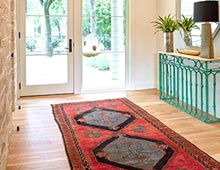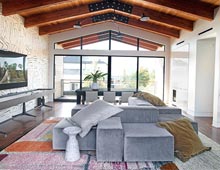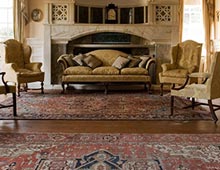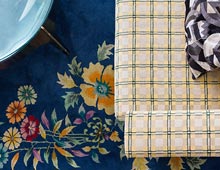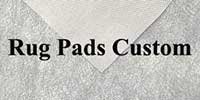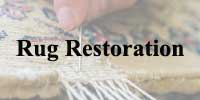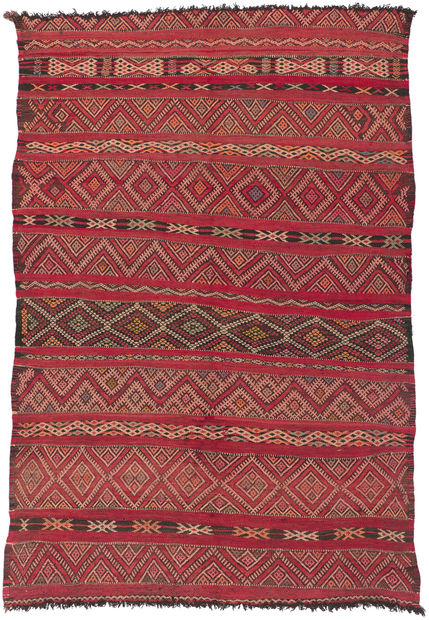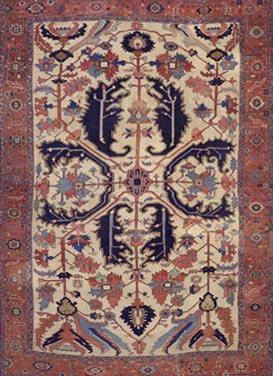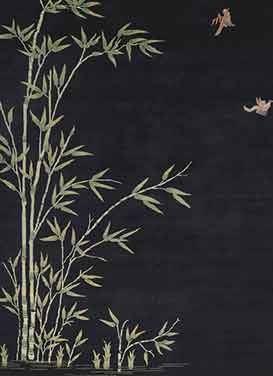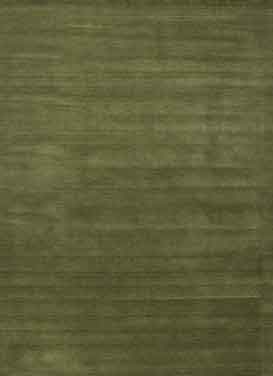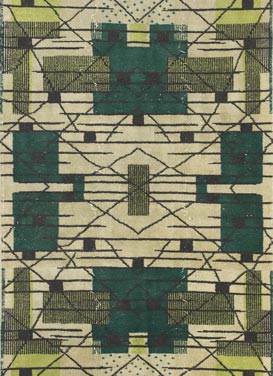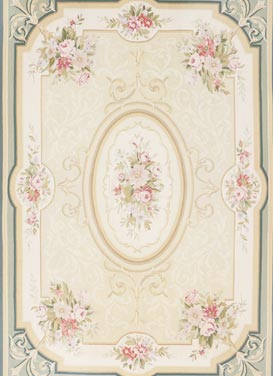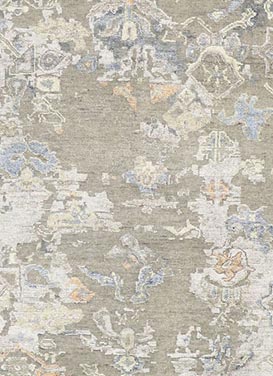- Inquiry
Description
78397 Vintage Zemmour Moroccan Kilim Rug, 05'03 x 07'09.
Deep in Morocco’s Middle Atlas mountains, a master weaver of the Zemmour tribe once brought to life this flatwoven wool runner using the revered hanbel technique. The Moroccan kilim rug unfurls in bold earthen hues—carnelian red, rust, ochre gold, and accents of black—colors traditional to Zemmour kilims. Across its length, alternating bands of intricate motifs and solid stripes create a steady visual rhythm, an interplay of geometry and color that captivates the eye. The presence of this textile is almost regal: it emanates the aura of a cultural chronicle, not merely as a floor covering but as a vibrant narrative in wool awaiting a listener. Woven in a tradition where every rug is a labor of love and heritage, this piece embodies generations of ancestral craft.
In Zemmour’s semi-nomadic lifestyle, a hanbel flatweave served both utility and memory—lightweight enough to roll and carry between seasonal encampments, yet brought out to honor important ceremonies like weddings. Hand-spun wool from local sheep was dyed with the bounty of the land: madder root for red, saffron and henna for tawny oranges and golds, even walnut and iron-rich earth for deep black. These natural dyes lend the textile a rich, organic patina; subtle striations of color (the prized abrash) testify to its handmade origin, each variation a reminder of the human touch. Even the colors themselves carry symbolic weight – in Berber lore, red is said to signify protection and strength, imbuing the rug’s fiery palette with the power of a guardian.
Across the field of the rug, a sacred geometry unfolds with intent. Repeated diamond lozenges and cross-like X motifs march in rhythmic procession, their forms laden with meanings preserved in cultural memory. The diamond, central to the design, is more than a shape: it represents the feminine womb and the vigilant eye of protection – an ancient Berber emblem of womanhood, fertility, and life’s genesis. Interspersed among these, the subtle X-shaped crosses speak to balance and unity; among Zemmour weavers this motif signifies the harmony of dualities – man and woman, earth and sky, past and future in cosmic equilibrium. Each symbol is purposeful. Even the simplest zigzag or eight-pointed star is a talisman woven into the fabric, perhaps to ward off misfortune or to invoke blessings of prosperity. The overall composition reads like a living alphabet of Berber art: a tableau of symbols through which the weaver converses with her community and ancestors, encoding prayers and stories into geometric abstraction. The visual repetition of these motifs is entrancing, a kind of woven mantra that connects the viewer to a long lineage of belief and tradition.
Though born as a utilitarian object, this kilim runner now stands as an artifact imbued with spirit and history. It transcends its role as a mere floor covering, evolving into a narrative masterpiece that shares the journey of the Zemmour tribe through its intricate weaving. Every fiber of its handwoven wool carries echoes of the Middle Atlas—the shepherding of sheep, the dyeing of wool with mountain herbs, the patient hours at the loom under a clay-roofed home or tent. In its texture and motifs reside the collective memory of a people: each pattern a chapter, each color a mood, each fringe a gentle whisper of a Berber song. It invites the viewer to not only admire its striking beauty, but also to sense the presence of the weaver’s hand and heart – a timeless testament to cultural memory, storytelling, and ancestral craftsmanship.
Traditional Berber dyes (madder, saffron, indigo, henna) yield their vivid reds and ochres, colors imbued with protective meaning. Each geometric design reflects Berber heritage – diamonds evoking the feminine and fertile, and X-shapes denoting fundamental balances. Such a rug, handwoven by Berber women using techniques passed down through generations, transcends its practical role to become a woven chronicle of the Zemmour people.
- Desirable Age Wear. Abrash.
- Hand-woven wool.
- Made in Morocco.
- Berber Tribes of Morocco. Zemmour.
- Measures: 05'03 x 07'09.
- Date: 1960's. Mid-20th Century.

